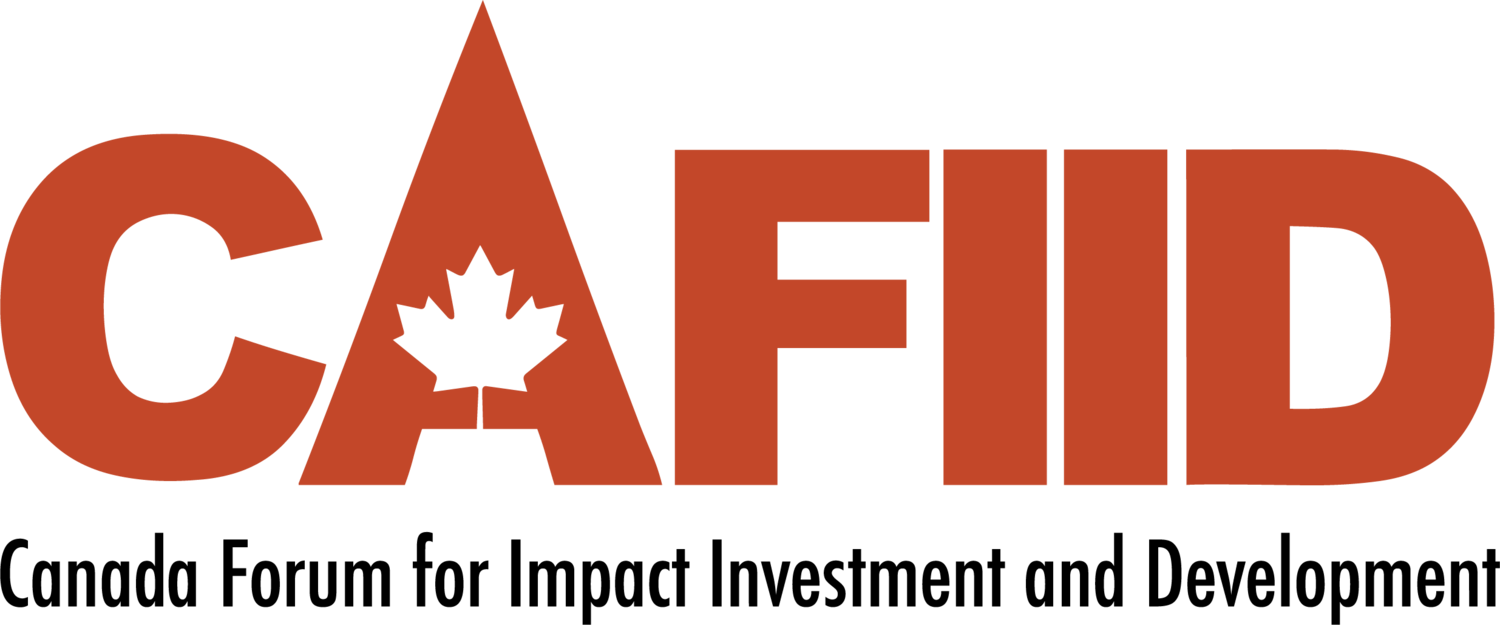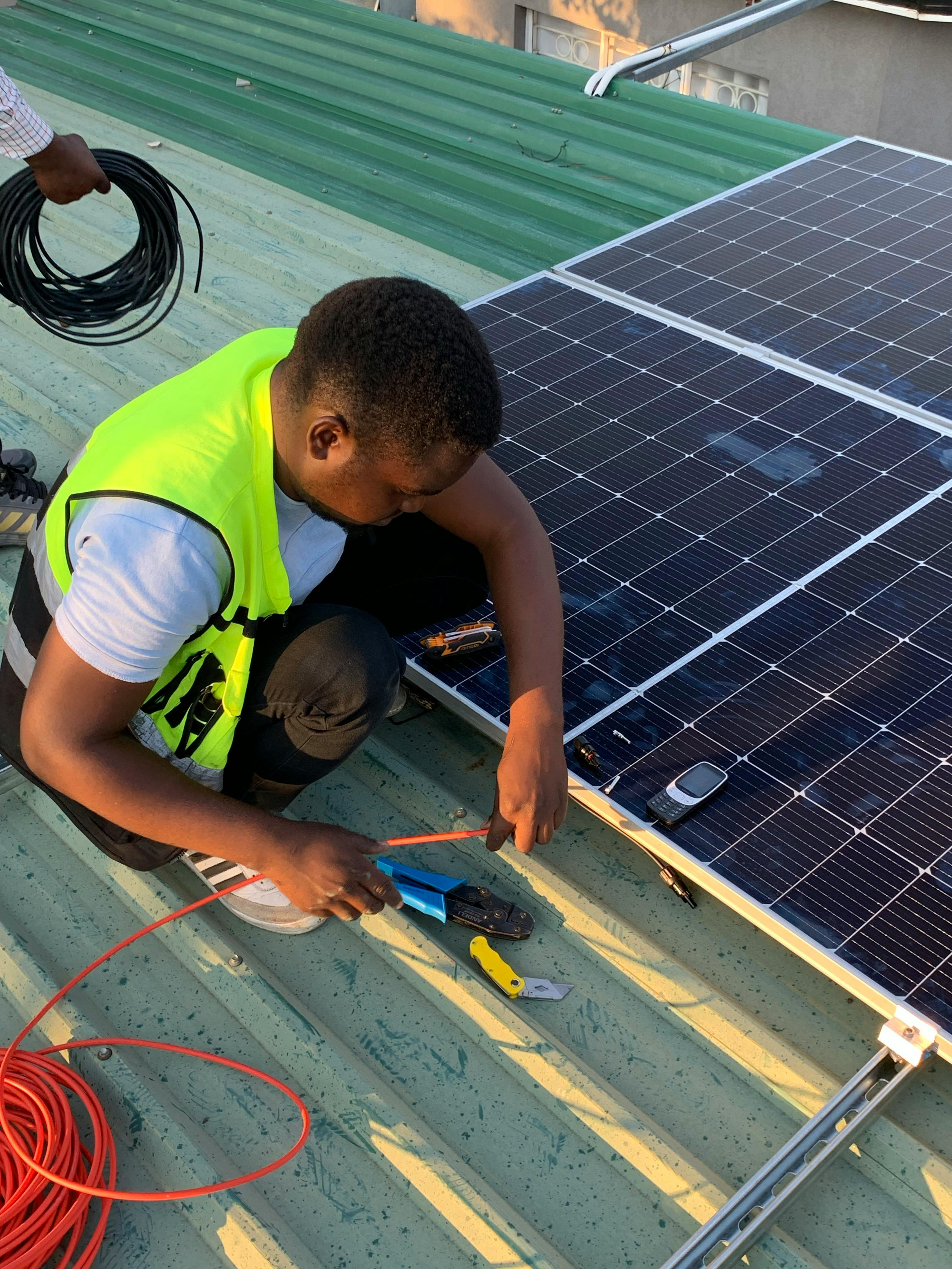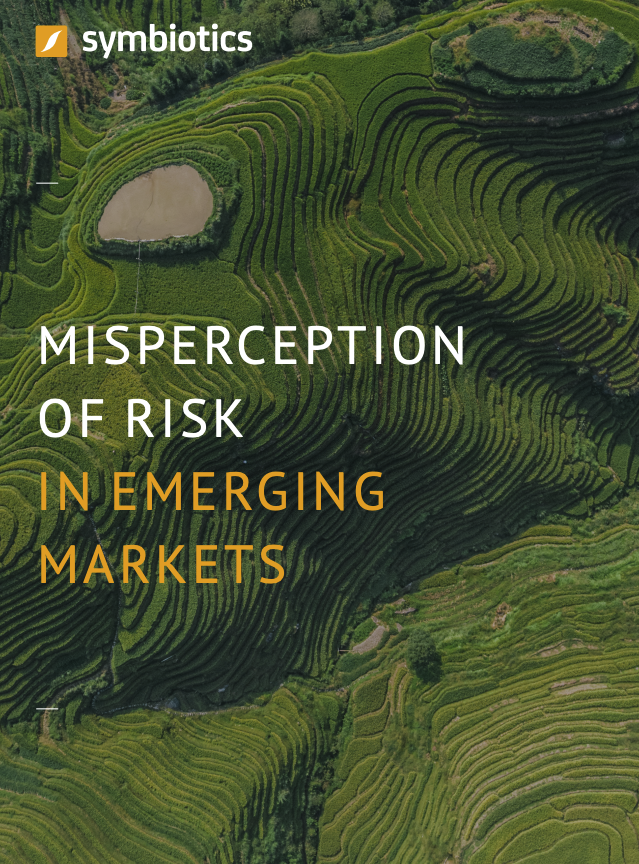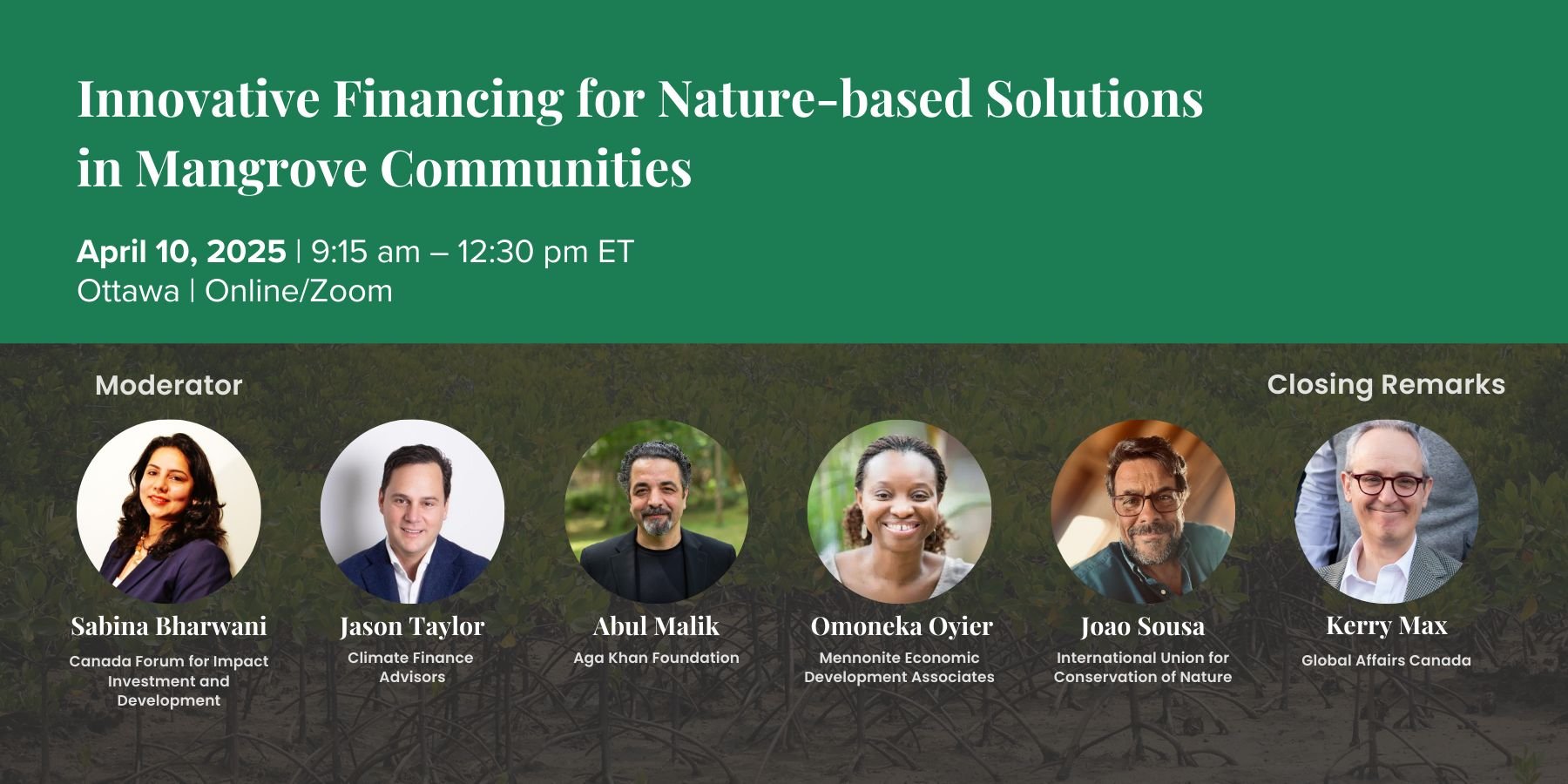
Knowledge Centre
Impact investing is a critical tool for achieving the Sustainable Development Goals (SDGs) by fostering more prosperous, inclusive, and climate-resilient communities. The CAFIID Knowledge Centre offers what you need to know about Impact Investing.
Gender Lens Investing | Climate Finance | Catalyzing Finance | All Resources
About Impact Investing
-
Impact investments are investments made into companies, organizations, and funds which generate social and environmental impact alongside a financial return. Impact investments can be made in both emerging and developed markets, and target a range of returns from below market to market rate, depending on investors' strategic goals. The growing impact investment market provides capital to address the world’s most pressing challenges in sectors such as sustainable agriculture, renewable energy, conservation, microfinance, and affordable and accessible basic services including housing, healthcare, and education.
Source: www.thegiin.org
-
The practice of impact investing is further defined by the following four core characteristics:
INTENTIONALITY
An investor’s intention to have a positive social or environmental impact through investments is essential to impact investing.
INVESTMENT WITH RETURN EXPECTATIONS
Impact investments are expected to generate a financial return on capital or, at minimum, a return of capital.
RANGE OF RETURN EXPECTATIONS AND ASSET CLASSES
Impact investments target financial returns that range from below market (sometimes called concessionary) to risk-adjusted market rate, and can be made across asset classes, including but not limited to cash equivalents, fixed income, venture capital, and private equity.
IMPACT MEASUREMENT
A hallmark of impact investing is the commitment of the investor to measure and report the social and environmental performance and progress of underlying investments, ensuring transparency and accountability while informing the practice of impact investing and building the field.
Source:www.thegiin.org
-
Impact investing challenges the long-held views that social and environmental issues should be addressed only by philanthropic donations, and that market investments should focus exclusively on achieving financial returns. The impact investing market offers diverse and viable opportunities for investors to advance social and environmental solutions through investments that also produce financial returns.
Many types of investors are entering the growing impact investing market. Here are a few common investor motivations:
Banks, pension funds, financial advisors, and wealth managers can PROVIDE CLIENT INVESTMENT OPPORTUNITIES to both individuals and institutions with an interest in general or specific social and/or environmental causes.
Institutional and family foundations can LEVERAGE SIGNIFICANTLY GREATER ASSETS to advance their core social and/or environmental goals, while maintaining or growing their overall endowment.
Government investors and development finance institutions can PROVIDE PROOF OF FINANCIAL VIABILITY for private-sector investors while targeting specific social and environmental goals.
Source: www.thegiin.org
-
Impact investing is a relatively new term, used to describe investments made across many asset classes, sectors, and regions. The GIIN estimates the size of the worldwide impact investing market to be USD 1.164 trillion, marking the first time that the organization’s widely-cited estimate has topped the USD 1 trillion mark. (GIIN, 2022). The market comprises a range of investor types, in terms of characteristics like organization type, headquarters location, and investor size. In Canada, organizations manage CAD $3.5 billion AUM in emerging markets and developing economies as of 2020 (CAFIID, 2021).
-
Impact investors have diverse financial return expectations. Some intentionally invest for below-market-rate returns, in line with their strategic objectives. Others pursue market-competitive and market-beating returns, sometimes required by fiduciary responsibility. Most investors surveyed in the GIIN's 2020 Annual Impact Investor Survey pursue competitive, market-rate returns. Respondents also report that portfolio performance overwhelmingly meets or exceeds investor expectations for both social and environmental impact and financial return, in investments spanning emerging markets, developed markets, and the market as a whole. A comprehensive review of available research on the financial returns of impact investments to date is presented in a 2017 GIIN report titled: GIIN Perspectives: Evidence on the Financial Performance of Impact Investments
-
Impact measurement and management is a core characteristic of impact investing. Understanding how to effectively measure and manage impact is critical to ensuring impact investors are achieving their desired impact results to address the world’s most pressing social and environmental challenges. However, encouraging more private and institutional investors to contribute to the SDGs and the Paris Agreement requires common frameworks that include a robust set of standards and assurance processes to enable asset owners to understand and compare impact management performance. These standards are important for organizations looking to raise impact capital and scale social impact.
The following are examples of Impact measurement frameworks for impact investors:
Impact Management Platform: Began in 2016 as a time-bound forum for building consensus on how to measure, assess and report impacts on people and the natural environment. The IMP’s Impact Management Platform and other initiatives offer organizations the resources they need to improve their sustainability impacts.
Harmonized Indicators for Private Sector Operations (HIPSO): Many DFIs share the same clients or invest in the same industries yet require clients to report their activities based on different sets of criteria. The HIPSO standardize these criteria and reduce the administrative burden of shared clients, allowing them to focus on what matters most: delivering results on the ground.
IRIS+: A system of metrics designed for impact investors to integrate social and environmental factors into investment decisions alongside risk and return. IRIS+ makes it easier for investors to translate their impact intentions into impact results.
Joint Impact Indicators: A subset of the HIPSO indicators and the IRIS Catalog of Metrics in topics that are common across investments, including Gender, Jobs, and Climate.
Operating Principles for Impact Management: Framework for investors for the design and implementation of their impact management systems, ensuring that impact considerations are integrated throughout the investment lifecycle. They may be implemented through different types of systems, each of which can be designed to fit the needs of an individual organization.
OECD-UNDP Impact Standards for Sustainable Development: framework for donors, development finance institutions and their private sector partners to make financial decisions and manage projects in ways that generate a positive impact on sustainable development, and improves the transparency of development results.
2X Criteria: Developed by Development Finance Institutions (DFIs) and the broader impact investing community, the 2X Criteria is a key framework in which DFIs and other impact investors carry out gender-smart investments.
-
Blended finance uses catalytic capital from public or philanthropic sources to increase private sector investment in emerging markets for global development impact. With support from public investors (such as first-loss capital or guarantees), private investors benefit from lower risk and/or enhanced returns on their investments in emerging and frontier markets. Meanwhile, public investors can magnify the impact of their funding – initial estimates suggest that public capital used in these transactions can attract up to 10x in private investment.
There is an estimated $2.5 trillion gap in funding per year for the Sustainable Development Goals (SDGs). As a result, governments, donor agencies, and philanthropists are looking for more catalytic ways to deploy capital to close this gap. At the same time, private investors are increasingly seeking new investment opportunities in high-growth emerging and frontier markets. At the intersection of these two trends is the blended finance opportunity. Blended finance transactions in Emerging and Frontier Markets have the potential to unlock billions of private sector dollars for global development.
Source: www.convergence.finance
From Trends to Transformation
Gender Lens Investing (GLI), Climate Finance, and Impact Measurement and Management aren’t just buzzwords —they’re key to solving global challenges. Watch this clip from CAFIID’s Virtual Open House, where Steering Committee members from each Community of Practice explain why these areas are reshaping the impact investing landscape.
Catalyzing Finance
Discover a range of resources dedicated to catalyzing finance for impact investing within the sustainable finance landscape. From insightful reports to CAFIID Member content, explore key tools and strategies aimed at maximizing positive social and environmental outcomes while ensuring financial returns. Stay informed, inspired, and empowered to drive meaningful change through informed financial decisions.
Climate Finance
Explore an array of climate finance resources tailored for impact investing enthusiasts and professionals alike. Delve into insightful content from CAFIID Members and other pertinent sources to enhance your knowledge and understanding of this critical aspect of sustainable investing. Stay informed and empowered to make a difference.
Gender Lens Investing
Check out our Gender Lens Invest Community of Practice page with case studies, recaps of past events and news about upcoming events.
2025 CAFIID State of the Sector Report
Discover insights into Canadian impact investing in developing and emerging economies with CAFIID's 2025 Sector Report. Explore trends, challenges, and opportunities driving measurable social, environmental, and financial returns aligned with the Sustainable Development Goals (SDGs).
Learn more about Canadian impact investing in developing and emerging economies in CAFIID’s 2025 State of the Sector Report page here.
Advancing SDG Focused Investing in Emerging Markets
On June 14th, 2023, CAFIID convened 97 stakeholders to explore opportunities to advance the commitments CAFIID made in its 2021 State of the Sector Report and to address the barriers inhibiting its growth in an effort to contribute to the development of the global impact investing ecosystem with a focus on emerging economies. Through a series of working groups, the participants examined a variety of issues related to SDG focused impact investing and developed recommendations for CAFIID and the sector. The event also featured the launch of an Impact Measurement and Management Community of Practice (IMM CoP) and working closely with other Canadian impact investing organizations to advance a National Advisory Board on impact investing. These two areas will be critical for advancing impact investing in Canada and around the globe.
Read the summary report here.
Contribute Your Expertise to CAFIID's Knowledge Centre
CAFIID Member contributions play a crucial role in amplifying knowledge sharing and fostering innovation. By sharing your insights, best practices, and experiences, you help empower others and to grow the impact investing ecosystem.
Interested in writing or sharing a learning resource?
Contact us!


























































